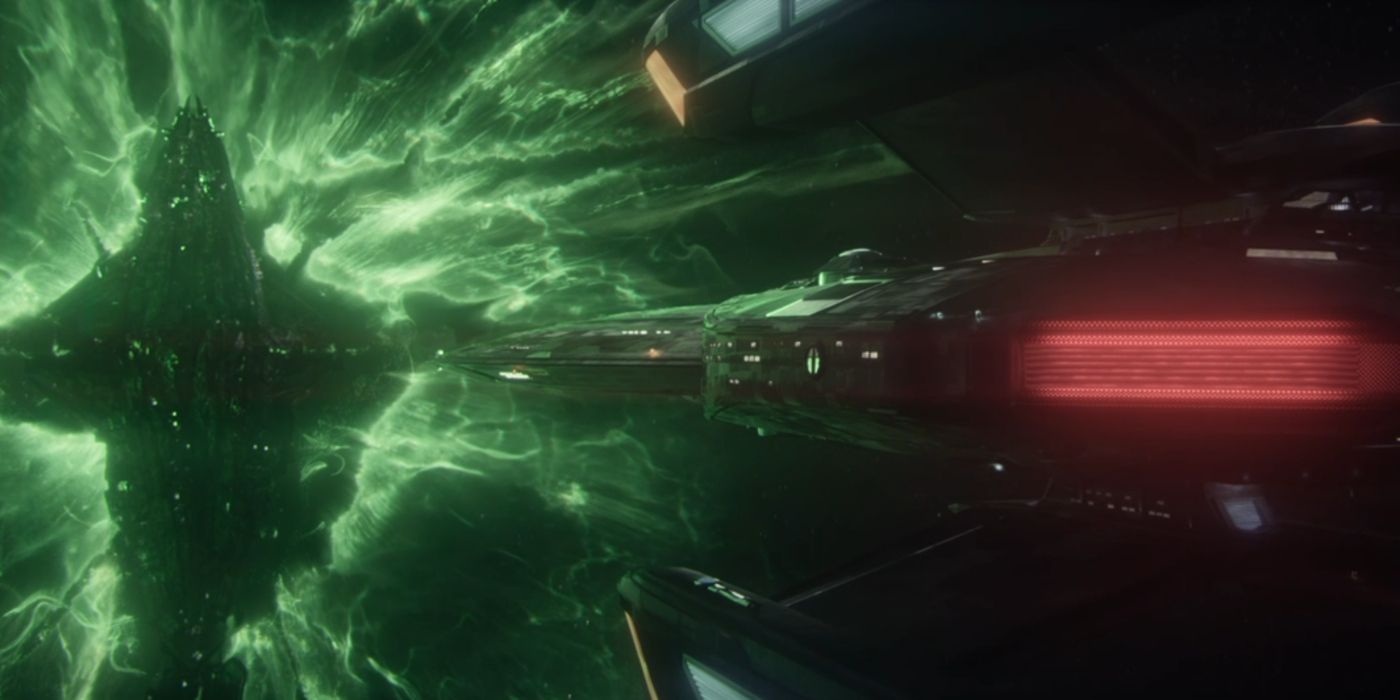This article contains spoilers for Star Trek: Picard season 2, episode 1.
Star Trek: Picard is finally demonstrating the full potential of the Borg. There is a sense in which the Borg can be considered Star Trek's ultimate villain. They are like a dark, twisted mirror of the Federation, boldly exploring the galaxy seeking new life forms and civilizations - but with a very different agenda. Convinced of their own superiority, they famously appear on the scene with a warning; "We are the Borg. Your biological and technological distinctiveness will be added to our own. Resistance is futile."
And yet, for all that's the case, the Borg have rarely lived up to their full potential. In theory, because the Borg are continually exploring and assimilating other races and technologies, they should be ever-changing. Their technology should change, sometimes dramatically, between any two encounters; new races should be added into the mix of drones all the time. But Star Trek has tended to stick with the same Borg technology, as well as with human drones. There's a good reason for this from an out-of-universe perspective, of course; the Borg were incredibly popular, and writers and even directors wanted to build on past success, not move away from it. But it's nevertheless meant the fluidity threatened by the Borg's warning - the idea of an ever-changing, ever-advancing hive-mind who can never be beaten the same way twice - hasn't really been capitalized upon.
Until Star Trek: Picard season 2, episode 1. The opening episode sees the USS Stargazer come up against a Borg ship - and it's immediately clear this is something new. Although it's neither a cube nor a sphere, the vessel is clearly Borg in design, and it bears some visual nods to previous Borg Queen ships seen in Star Trek: Voyager. But it's clearly different, and the USS Stargazer detects a surge of Hawking radiation - a concept that's relatively new to Star Trek, but is associated with black holes in the real world - and is often treated as a key indicator of time travel in science-fiction. Thus this may well not be the Borg Picard and his crew know, but rather the Borg of a distant future who have absorbed countless new races and technologies since they last clashed with the Federation. That would explain why they are visually so different to the traditional Borg.
The self-identified Borg Queen who transports to the USS Stargazer is visually very different as well. There's a degree of symmetry to her design that's missing from other iterations of the Borg, again suggesting significant technological evolution among the Borg since they last encountered Picard and the Federation. Her weapons are particularly interesting; in the past the Borg have always possessed the ability to adapt shield to protect against phaser-fire, but the Borg Queen appears to be using a rather more sophisticated technology. At first only a couple of phaser-shots are blasted at her, and she waits for a moment until she returns fire; the Stargazer's security team then bombard her with weapons fire, and again she waits for a few moments before responding with a rather more impressive volley. The apparent implication is that this Borg Queen is absorbing the energy blasts of the phasers, using them to charge her weapons, and then blasting this energy back in a modified form. This raises a lot of disturbing questions about the Borg Queen's allowing Picard time to trigger the auto destruct; it's quite possible the Borg intend to use the energy released from that explosion as well.
"This is new," Agnes Jurati noted as she observed these new Borg. She should know; she's one of the galaxy's foremost experts on Borg technology, and it's notable she's on a starship with Jean-Luc Picard and Seven-of-Nine, who have a depth of direct experience with the Borg, and yet are just as shaken. In truth, this should be the reaction even Picard and Seven have every time they encounter the Borg, because of their constant expansion and assimilation. It's great to see Star Trek: Picard finally realize this truth, albeit potentially using time travel to enhance it.


